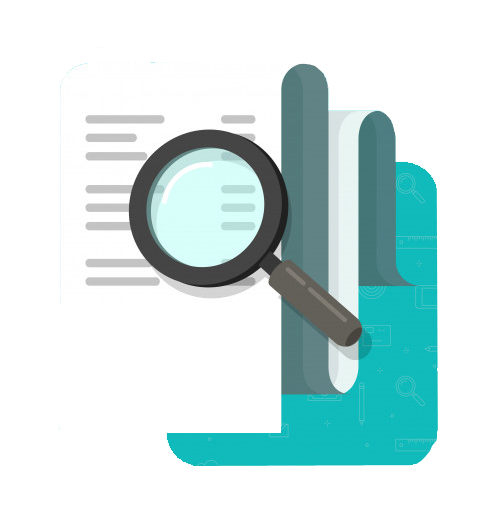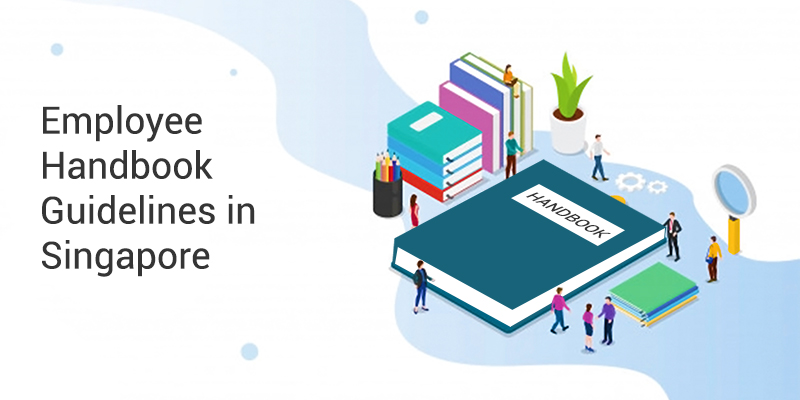What is an Employee Handbook?
An employee handbook is a document that contains your company’s operating procedures, policies, and expectations. It’s generally given to staff members on their first day of work (as part of the onboarding process) to clearly set out what is expected of them, and what rights both the employee and employer have.Why do I need an Employee Handbook?
 It’s becoming increasingly important for businesses of all sizes, including small to medium enterprises (SMEs) to develop their own employee handbook.
When a company is in its infancy, the CEO/Owner can usually interact with the few staff they have with relative ease. That means that company policy and culture is fairly easy to communicate, and expectations are clear on a one-on-one basis.
However there will come a time (perhaps sooner than expected) when the CEO/Owner must formalize company policy and culture, and delegate the responsibility of this policy to self-governing managers or teams.
As with all things in expansion and delegation, this allows the CEO/Owner to focus on the core functions of running the business. However a well developed employee handbook has other benefits too:
It’s becoming increasingly important for businesses of all sizes, including small to medium enterprises (SMEs) to develop their own employee handbook.
When a company is in its infancy, the CEO/Owner can usually interact with the few staff they have with relative ease. That means that company policy and culture is fairly easy to communicate, and expectations are clear on a one-on-one basis.
However there will come a time (perhaps sooner than expected) when the CEO/Owner must formalize company policy and culture, and delegate the responsibility of this policy to self-governing managers or teams.
As with all things in expansion and delegation, this allows the CEO/Owner to focus on the core functions of running the business. However a well developed employee handbook has other benefits too:
- Employees have a definitive resource if they are unsure of any policy.
- Get new employees to feel welcomed and valued by showcasing the benefits you offer them.
- Employees know their rights and responsibilities without equivocation.
- Provides clear channels of communication for an employee seeking help.
- It helps create a culture where everybody is bound by the same rules and responsibilities, and there is no perceived favouritism.
- Creates a safe work environment.
- An employee handbook can help protect the organisation if a dispute is put forward by an employee.
- Reduces time wasted by management addressing questions about policy.
- Can be a living document that evolves and grows with the organisation.
What is the difference between an employee handbook and a policy manual?
Employee handbooks and policy manuals are often confused for one another. In essence, an employee handbook is a simplified document used by employees, whereas a policy manual is an exhaustive policy document, for use by management and Human Resources (HR). Here are the main features of each for comparison:| Employee Handbook | Policy Document |
| Employees are the main audience. | Managers and HR staff are the main audience. |
| Content is simplified and easy to understand. | Content is comprehensive and detailed in all aspects of policy. |
| Its purpose is to educate employees on general rights and responsibilities. | Its purpose is to be a reference material to provide more nuanced detail on company policy. |
Related Read: Everything you should include in an employment contract in SG »
What Should be in an employee handbook?
While an employee handbook should be relatively concise and simple, there are still a wide range of topics to cover. While this is not a complete list of topics, and you will need to adjust for your own organisation, this should cover most bases for most organisations. Please remember that any employee guidelines written for staff in Singapore must adhere to the Ministry of Manpower (MOM) employment practices. Where appropriate, we have linked to official MOM guidelines.Welcome/Company History/Mission Statement
While not strictly necessary, it’s always a good idea to start with a quick welcome to the team, as well as a short company history, as well as what you embrace in terms of culture as a wider organisation. This helps get things off on the right foot with new employees with a welcoming embrace, rather than the perception you’ve just thrown a rulebook at them.Leave Policy
This section should cover your leave policies for:- Adoption Leave.
- Annual Leave.
- Childcare Leave.
- Maternity Leave.
- Paternity Leave.
- Shared Parental Leave.
- Sick Leave.
- Unpaid Infant Care Leave.
- Public Holidays.
Expectation of Employee Behaviour/Code of Conduct
In this section you should cover topics such as:- Dress code.
- Office hours.
- Attendance policy.
- Meal breaks and rest periods.
- Onsite smoking/vaping policy.
- Illegal substances policy.
- Internet and social media policy.
Wages/Salary and Promotion
Make clear your positions on:- Pay period (weekly, fortnightly, etc).
- Overtime policy.
- Work hours required.
- Pay grade structure.
- Career path options.
- Compensation/stock options.
- Performance appraisal process.
Employee Benefits
Give an overview (where appropriate) off:- Health care.
- Dental care.
- Vision care.
- Life insurance.
- Who is eligible for what benefit/criteria for eligibility.
Equal Opportunity, Anti Harassment, and Anti Discrimination Policy
Outline your policy for protecting employees from:- Workplace discrimination for sexim, racism, ageism etc.
- Workplace harassment e.g. sexual harassment, bullying etc.
Confidentiality/Non-Disclosure Policy
Make clear what information you deem confidential, and that it should not be distributed to third parties for any reason whatsoever. This will cover things like business plans, client lists, and sales figures.Health and Safety Policy
Outline:- Who to talk to about health and safety.
- Procedure if an employee gets into an accident at work.
- Where the first aid kit is.
- Where the fire extinguisher is.
- Where building/office maps are.
- What to do in event of disaster.
Discipline and Termination Policy
Specify the following:- What constitutes grounds for disciplinary action.
- How the disciplinary process works, e.g. verbal warning, then written warning, etc.
- The process for either party to terminate with notice.
- Whether or not you require exit interviews.
Complaint Process Policy
Explain step by step how to undertake a complaint for any grievance the employee may have endured.Disclaimers
Include the following disclaimers where appropriate:- State that the employee handbook is not a contract, and does not guarantee employment for any specified period of time.
- The handbook should supersede any previous policy documents made available to employees.
- All policies and guidelines in the employee handbook are subject to change.
Signature Page
It’s important to verify here that your new employee has read and acknowledged the employee handbook by signing and returning an acknowledgment page. Once returned, put it into their personnel file.What Should I Not Put in an Employee Handbook?
There are a few things you should be aware of in terms of what not to include in your employee handbook.Unnecessarily Complex Language
As mentioned earlier, this is not a policy manual, so keep things simple and to the point. The employee reading the handbook should not need a degree in employment law to understand the concepts.Cookie Cutter Policies
Make sure that all policies are tailored as much as possible to your actual organisation, not just what other organisations do. Your company will have its own culture and idiosyncrasies, so it’s important to keep that in mind when communicating policies to new employees.Overly Strict Disciplinary Policies
While we do recommend the outline of disciplinary steps and procedures, be careful not to make it too strict — this may leave the company ill-equipped to handle incidents that don’t fall under a rigid criteria.Restrictive Social Media Policies
While we encourage any organisation to have social media policies outlined in their employee handbook, it’s important not to take a big-brother approach to their social media use. Keep things simple, and open to the rules of common sense. Overall there are more benefits than pitfalls for your employees discussing your work online, so keep that in mind in your social media policy.How Do I Write an Employee Handbook?
Beyond the handbook structure and contents above, it’s beneficial to keep the following in mind in your approach to writing an employee handbook:- Write with the notion in mind it is a guide for your employees, not a book of rules to be enforced upon them. Treat them as part of your team/family rather than just an employee.
- Use language that is simple, and encourages positivity and proactivity. No industry jargon if possible.
- To help simplify the document, be sure to use headings and subheadings clearly, along with short paragraphs. Use bullet points where possible to simplify further.
- Treat your employee handbook as a living document that is subject to change as your organisation grows.
- Above all, make sure you have your legal representation review your employee handbook every time you make changes to it. This is crucial to protect yourself from possible liability down the track.
How Long Should an Employee Handbook Be?
 Contrary to the opinion of some, the length of an employee handbook should be the same for an SME right up to a large corporation — it’s important to cover all of your bases no matter the size of your operation.
In general, we recommend your employee handbook be between 30 and 50 pages. This way you can impart enough important knowledge without asking the reader to absorb too much information.
Contrary to the opinion of some, the length of an employee handbook should be the same for an SME right up to a large corporation — it’s important to cover all of your bases no matter the size of your operation.
In general, we recommend your employee handbook be between 30 and 50 pages. This way you can impart enough important knowledge without asking the reader to absorb too much information.


